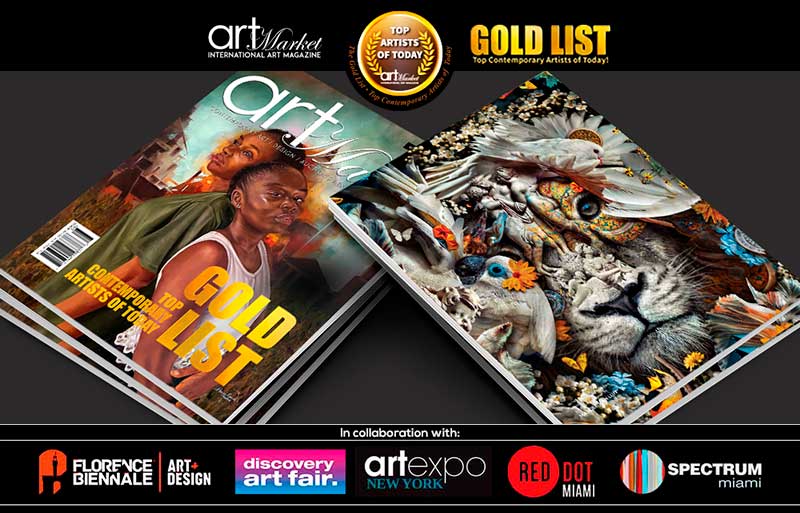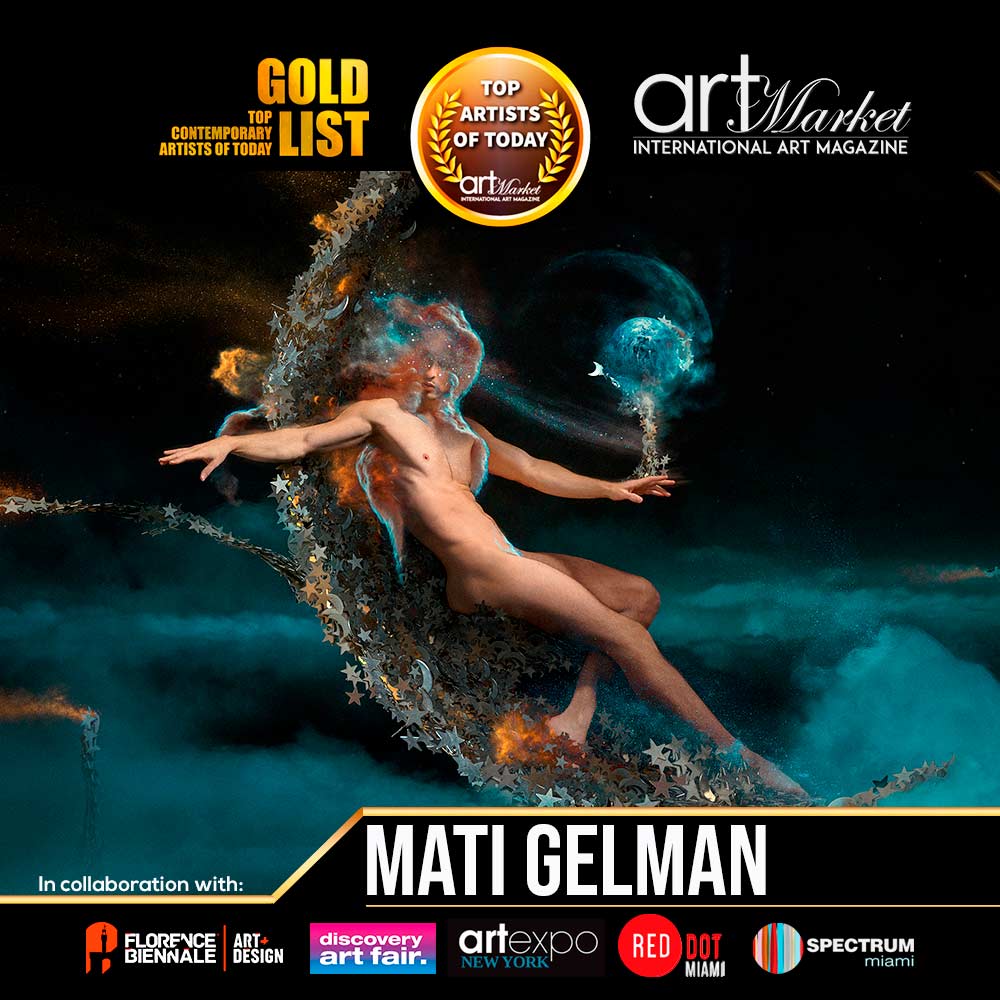In The Search for the Divine
An Exclusive Interview With
Mati Gelman
By Ariel SU
“In pursuing a panoramic vision of the minuscule and mighty, I have found that both may be brought to life through photographic composites that blend physical reality with fine post-process artistry. It is both my hand and heart’s work- as a lifetime of patience and growth has taught me to composite my own identity so that I might live grounded and ascended. Literal and liberated.” – Mati Gelman
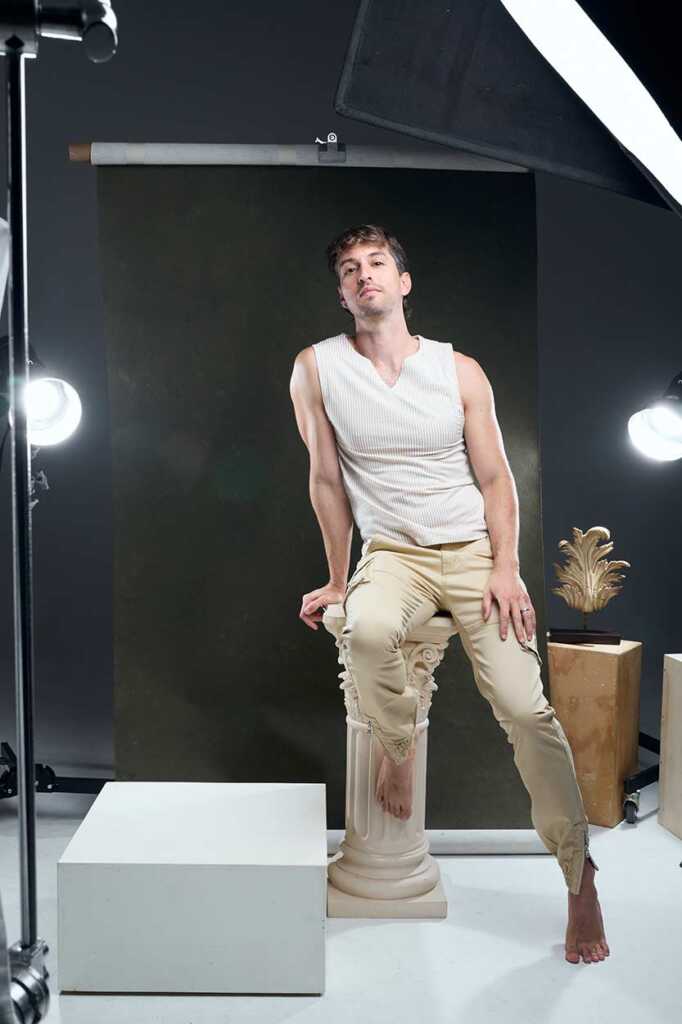
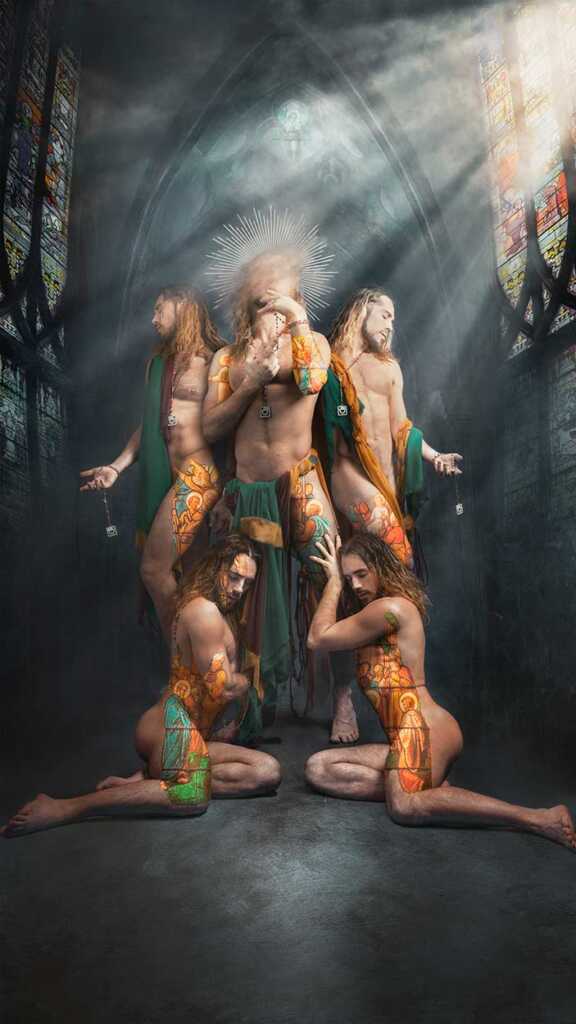
2024 © All rights reserved.
Right: Trending Deities Part I. Digital Photography, 2019
Mati Gelman is a talented, self-taught photographer specializing in commercial and fine art photography. He has a diverse background, having been born in Hungary and raised in Israel. His educational journey initially focused on science, culminating in a degree in Biochemistry from the Israel Institute of Technology (Technion) and a Master of Science in Organic Chemistry from Bar Ilan University in Tel Aviv. However, his passion for photography led him to transition to a career in this field after relocating to New York City, where he currently resides.
Mati Gelman’s artistic exploration delves into the realms of queerness and the intertwining of humanity with the natural world through composite and staged photography. His work can profoundly evoke a sense of rapture, wonder, and simultaneous disconnection. Transitioning from a background in chemistry, where he manipulated matter and molecules, Mati now channels his creativity into manipulating pixels and images to create stunning visual narratives.
Gelman’s exceptional talent has been recognized through many prestigious awards, including the UMBRA International Photography Awards, the Fine Art Photography Awards (FAPA), and the International Color Photography Contest’s Chromatic Awards. Additionally, Mati was honored as a 2021 Finalist in Microsoft’s “Original by Design” competition.
Gelman’s creations have been exhibited at renowned galleries such as Artsy, Dabart, More Art Please, Photoplace, and SMUSH over the years. His work has also been featured in publications like Joshua Teal’s “Dance Vision” from Abrams Books and “Painting with Light,” which showcase his remarkable output over the past five years.

Digital Photography. 2018
In 2021, Mati Gelman was the finalist in the Special joint international competition organized by Art Market Magazine, Lens magazine, and Florence Biennale, an achievement that was celebrated with an exclusive interview in Lens Magazine issue #105. Furthermore, in 2023, his captivating large-scale photography work was showcased at the Florence Biennale event held in October, further cementing his status as a trailblazing artist.
An Exclusive Interview With Mati Gelman
By Ariel SU
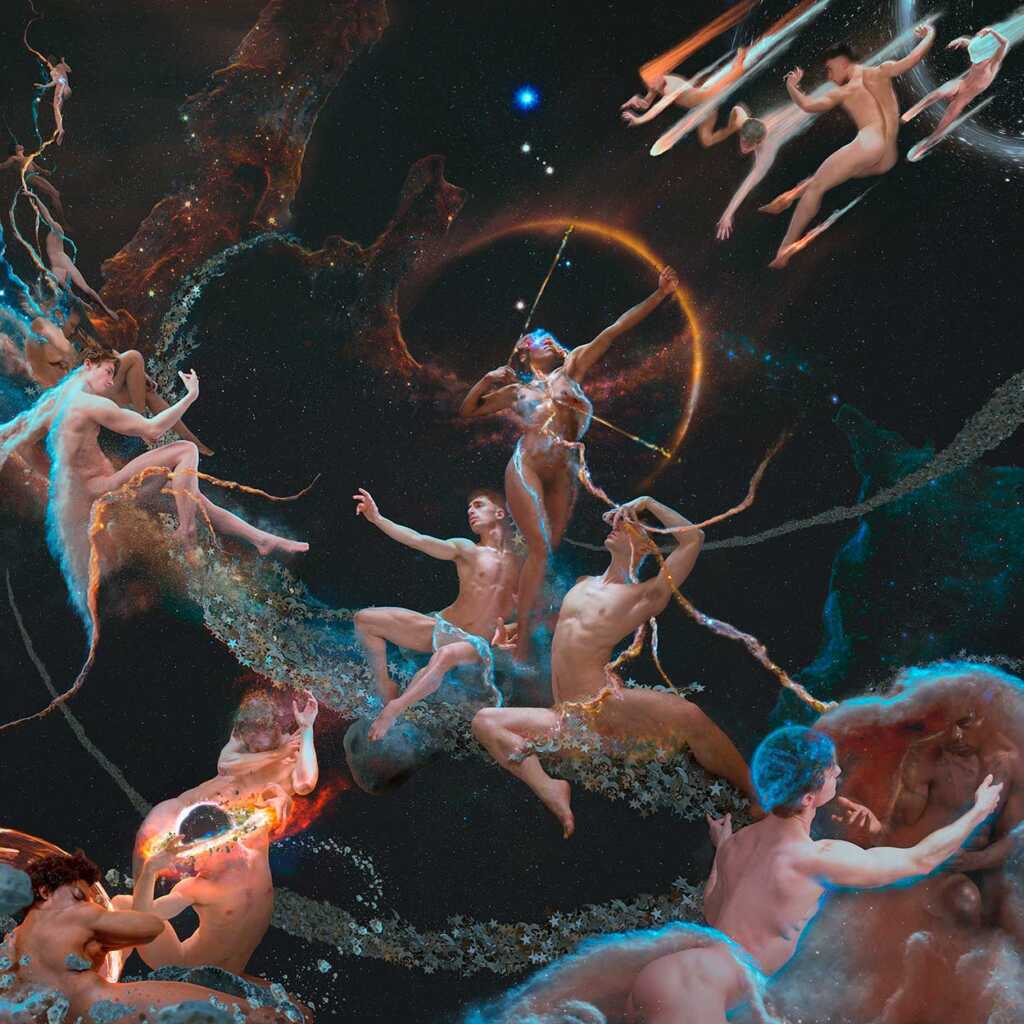
Digital Photography. 2024
Art Market Magazine: Congratulations, Mati, on achieving the prestigious GOLD LIST 2024 award.
It’s an honor to have the opportunity to interview you. Your artistic journey and creative growth over the years have been truly inspiring. Your work is not only captivating but also incredibly fascinating. Your exceptional technical skills and the aspects you choose to focus on have left a lasting impression on me. I am particularly impressed by the fact that you are a self-taught photographer. Could you share more about how you acquired such advanced skills?
Mati Gelman: I’m deeply honored to be recognized with the GOLD LIST 2024 award, and I’m grateful to anyone who connects with my work. Hearing that you consider my skills advanced is quite humbling because I often find myself frustrated by the gap between my ambitions and my current abilities. However, I’ve seen this frustration as a positive force that means growth.
I am still on the journey of acquiring my skill set.
My introduction to professional photography began in 2015 to capture higher-quality images during family hiking trips. The way professional lenses captured light and detail fascinated me, revealing the subtle interplay of reflections across various surfaces, including people. At that time, I was completing a thesis in Organic Chemistry – a field that, like a language, has its own syntax and structure rules. This background influenced how I approached photography, viewing each image through the lens of an organic chemist, eager to dissect and understand its components.
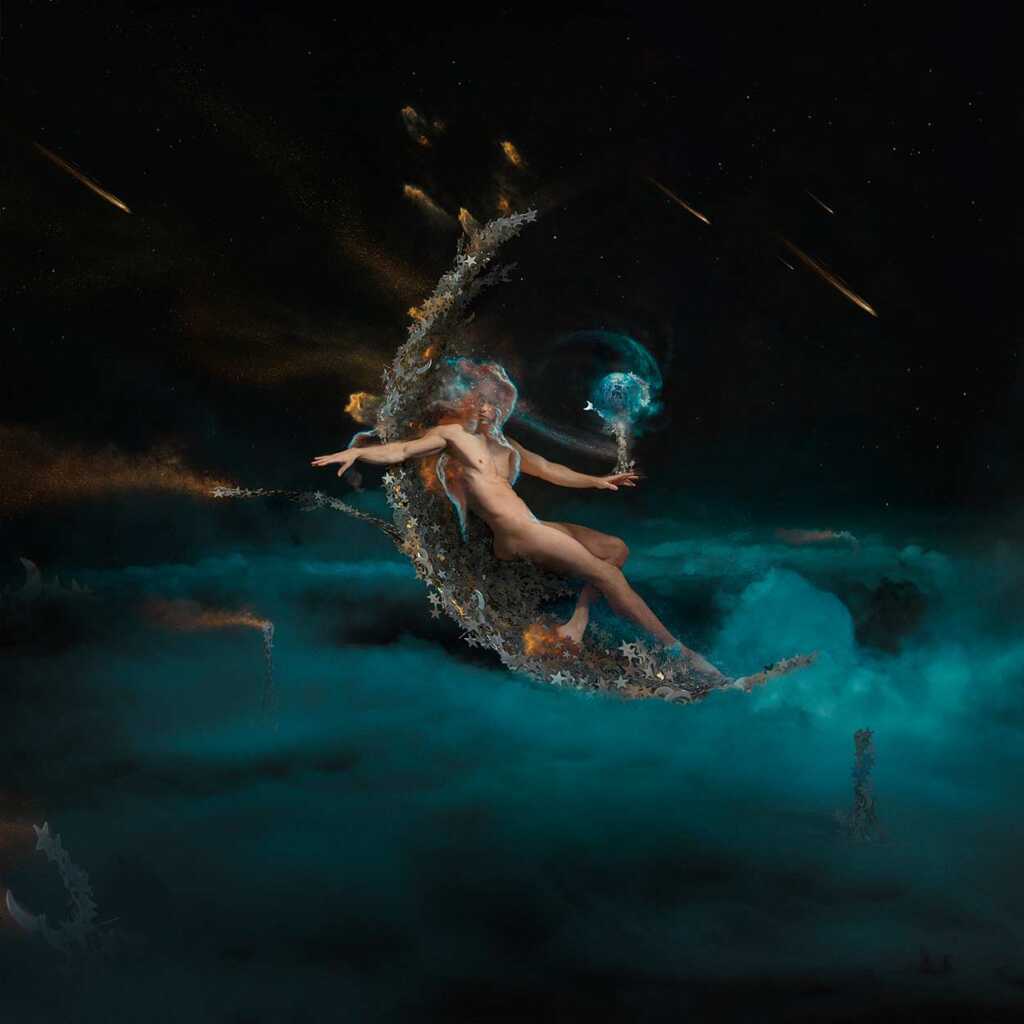
Digital Photography. 2022
I began to see parallels between chemical structures and photographic elements. Just as complex organic compounds form, so do the pixels and elements of an image merge to create something greater than their sum. Yet, unlike inorganic compounds, the significance of these photographic compositions lies in their interpretation by the human mind—outside of which they hold no inherent meaning.
Driven by these thoughts, I started to experiment beyond traditional photography, venturing into digital composites and collages. This exploration wasn’t just about mastering the technical skills and understanding the deeper meanings conveyed through images. My most valuable learning experiences came from workshops led by artists who embraced similar approaches rather than formal photography schools. Additionally, I’ve benefited immensely from the wealth of knowledge available through YouTube tutorials, which have been instrumental in shaping my self-taught journey.
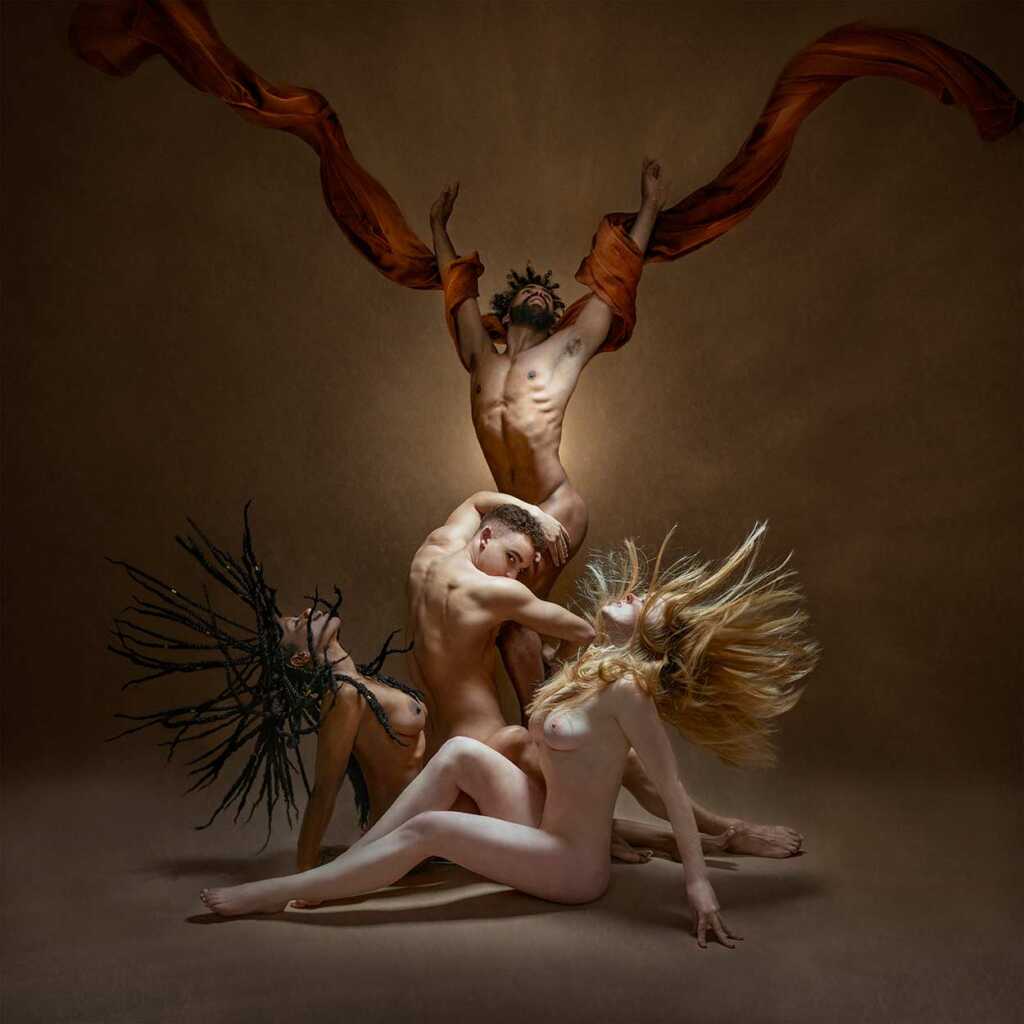
Digital Photography. 2020
“Dancing across the canvas, Mati Gelman’s dream-like silhouettes invite us to embark on an introspective voyage into emotional and psychological realms, navigating inner journeys regarding the hidden complexities of the male experience.”
– Amsterdam Whitney Gallery. June 2024
Art Market Magazine: You were born in Szeged, Hungary, grew up in Israel in a kibbutz, and moved to New York City in 2016. As a two-time immigrant, which location has impacted your artistic journey, and in what way? Has your nuclear family supported your artistic journey? Was there an appreciation for art in the family?
Mati Gelman: I used to think that art was a waste of time and often looked down on it. I realize now that this mindset came from growing up in a very results-oriented society in Israel, where we were encouraged to pursue prestigious and highly valued degrees that could generate significant income. Growing up, I often felt like the odd one out, being a child immigrant from Hungary at the age of six. I also realized that I was different in other ways. Although I only came out later in life, I knew as a child that I was different from the rest of the boys. I think that being an immigrant, along with my personal experiences, forced me to look at life with nuance and find my place in it. I ended up studying science because I’m a curious person, but I’ve always been creative. In my environment, there was mostly an appreciation for commercial art.
I had to find my way to the arts later in life after meeting my husband, finishing my Master’s in Chemistry, and deciding to move to New York City. This move provided a clean slate and the opportunity to start something new. I picked up a camera and became a photographer and, shortly after, an artist, with significant encouragement from my husband, who is an artist himself. I resisted a lot and still find myself questioning what I’m doing.
Artistically, New York City accommodates me much more than my previous homes. I’ve met people who appreciate the arts here, which made me believe that pursuing a career in this field is possible.
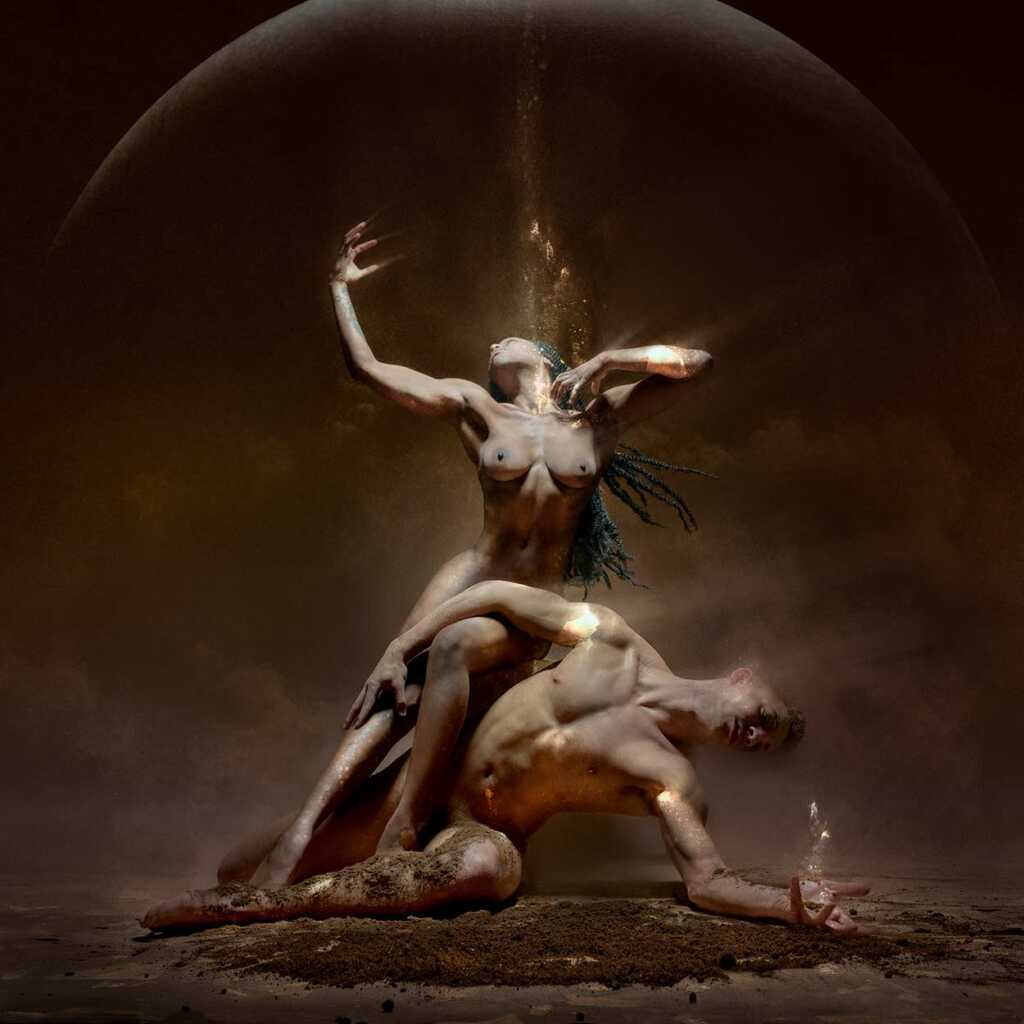
Digital Photography. 2020
Art Market Magazine: In recent years, you have created projects mainly focused on the human body, nudity, and human relations with nature. You also have a special series focused on religion and scenes from the Bible.
Why these subjects specifically? Is it a self-exploration for a profound understanding of human nature? Are you a religious believer?
Mati Gelman: I am far from religious. But religions embody so much of what people perceive as reality. They provide context for the meaning of nature, so it’s fascinating to explore their symbolism. I use religious and mythical references metaphorically and as juxtapositions.
We can look at the church and other religions as the largest corporations in human history, commissioning almost every type of artist to create work for them. So, the amount of work from which to draw inspiration is immense.
Religions are often based on mythology, and I use many mythical elements because myth is how humans explore themselves and the natural world.
I am fascinated by the human body and have always been attracted to dance and movement as art forms. Naked human bodies are everywhere in religious and mythological art because that is what they explore – what it is to be human.
I don’t even attempt to answer these big questions; instead, I ask my own and use bodies as a reflection of myself.
Art Market Magazine: Imaginary world, scenes of ancient mythology, or religious scenes. Where does the inspiration come from? Do you visualize the final outcome at the beginning of the creation process?
Mati Gelman: I often do visualize the final outcome as a goal. Then, when I start planning, photographing, and editing the image, it takes on its own shape and life. The imagined visual serves as a North Star, but it usually never ends up as the final outcome. In this case, the reality often turns out way better than imagined.
I get inspiration from everywhere. Sometimes, my frustrations serve as inspiration, and creating a visual is a way for me to express them. Other times, it’s as simple as observing how a vine wraps around a tree bark, moss growing on rocks, water breaking against a hard object or surface, or a dancer making a gesture. These observations reveal how things connect and separate, which I find exhilarating and exciting. It’s all about the interaction of forces—the push and the pull—something that goes beyond words. I often create a world where I highlight one of these observations. Translating feelings into visuals is highly challenging but fun and drives me to explore and create more.

Digital Photography. 2017
Art Market Magazine: Your models are professional dancers, and during the photography session in the studio, you need to direct them into positions. Your deep understanding of the human body is evident. Do you have experience dancing?
Mati Gelman: I have always wanted to be a dancer, so my appreciation and excitement are apparent whenever I meet one. Unfortunately, I couldn’t fully get into dancing because of my back problems. However, I do practice yoga and work a lot on my body, so my awareness comes from that. The first thing I tell any dancer I photograph is to forget about their formal dance education. I look for movements in between, the graceful misalignment. ‘Weird’ is a direction I like to give. After all, it is a photoshoot, and authenticity becomes evident when people can let go. So, my job becomes just like any other photographer’s, to make my models feel comfortable and own the stage.
Art Market Magazine: Have any artists or photographers influenced your art?
Mati Gelman: I admire surrealism and draw much inspiration from it. The works of Salvador Dalí and René Magritte are my favorites. I choose to open my mind to all art forms and take dedicated time to consume them.
I love walking through the Metropolitan Museum; the paintings are my favorite. A good friend of mine, who has an art history degree, used to work there, so every now and then, he’d invite me on a Wednesday, and we’d have the entire museum mostly to ourselves. I got to take my time with art and got educated by my friend since I do not have a formal art education. An image I created this year was directly influenced by a visit to the MET, which is titled Rulers of the Galaxy.
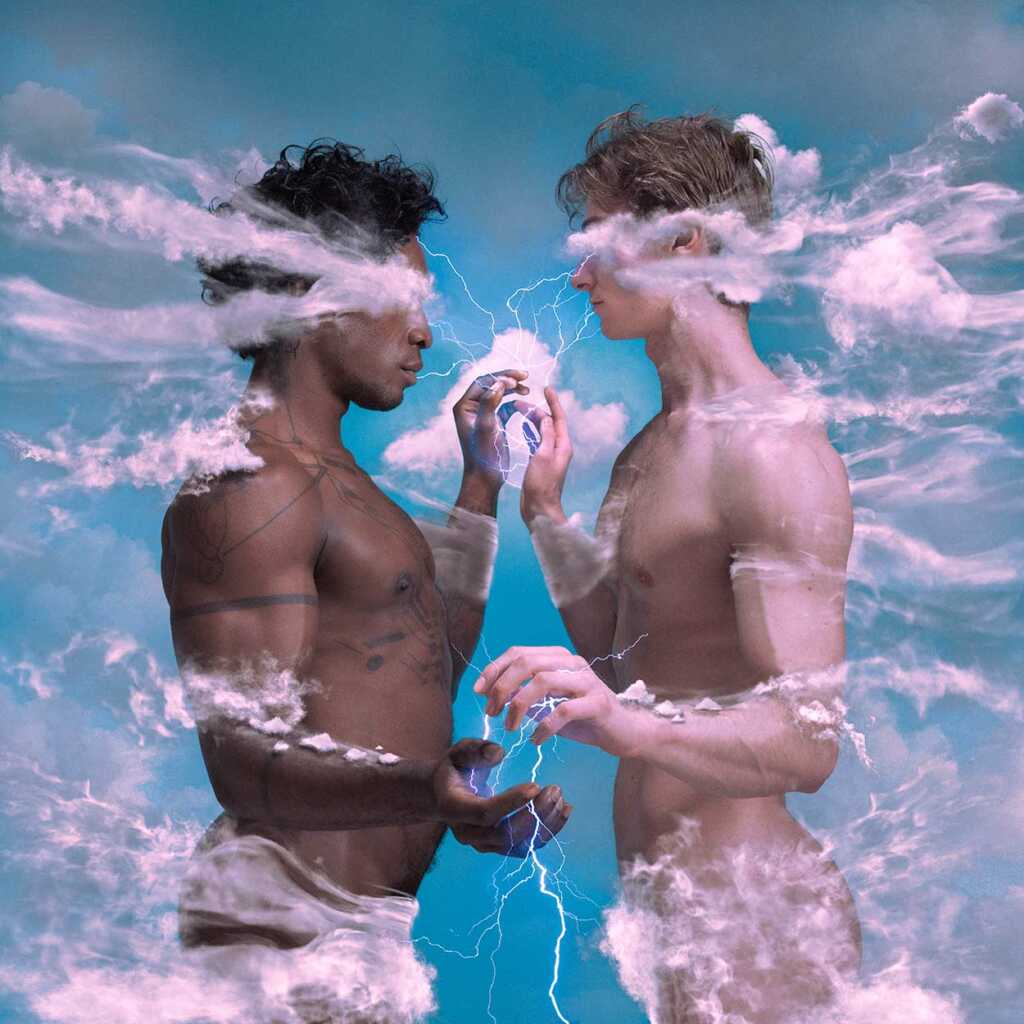
Digital Photography. 2024
Art Market Magazine: Tell us about the workflow process from the step of the idea until the final outcome. Which software do you use for editing? Do you see post-processing as the primary time investment in your work?
Mati Gelman: The process begins with some inspiration or a “spark,” which eventually turns into an idea for a visual. Sometimes, this happens immediately, while other times, I think about it for a while. I usually write down my ideas in sentences instead of sketching them. Once I feel confident about the ‘why’ behind the visual, I plan and execute the photoshoot.
My workflow typically starts with a flash of inspiration, often a fragment of an idea. It could be a visual cue or an emotion, which I then ponder and document as text—a process I find challenging yet efficient as it sharpens my focus. Depending on the idea, I either develop it into a concept or experiment with my camera.
During the photoshoot, I aim to create as many “open-ended” shots as possible, treating every subject or object like a “prop” that can be manipulated and fitted into a larger image. I primarily use Photoshop for post-processing.
The beauty of this process is that the path to the final image remains open-ended, allowing me to adjust the idea according to the versatility of my source material. This approach can make the process more challenging, as I can quickly get stuck in the initial phase of the idea. However, it also enables me to arrive at the best possible outcome. I let the photo shoot and the editing process guide me to the best result, making changes as necessary, even after the photo shoot is done.
The post-processing stage is indeed the most time-consuming part.
It’s like painting; I use many photographs to create one image. Choosing the right ones takes a while, and letting the work find itself. This step is more time-consuming than one might think. With a digital camera, there’s no limit to how many photos I can take, so I take more than I need. This helps me hone in on the feeling I’m looking for. Each photograph I choose has to support this feeling, so I tune into it and see what clicks as I go through it.
I primarily use two programs: CaptureOne and Photoshop. CaptureOne allows me to tether and save the RAW images directly to my computer. Tethering means the digital camera is directly connected to the computer, so I can see my images on a big screen as I take them.
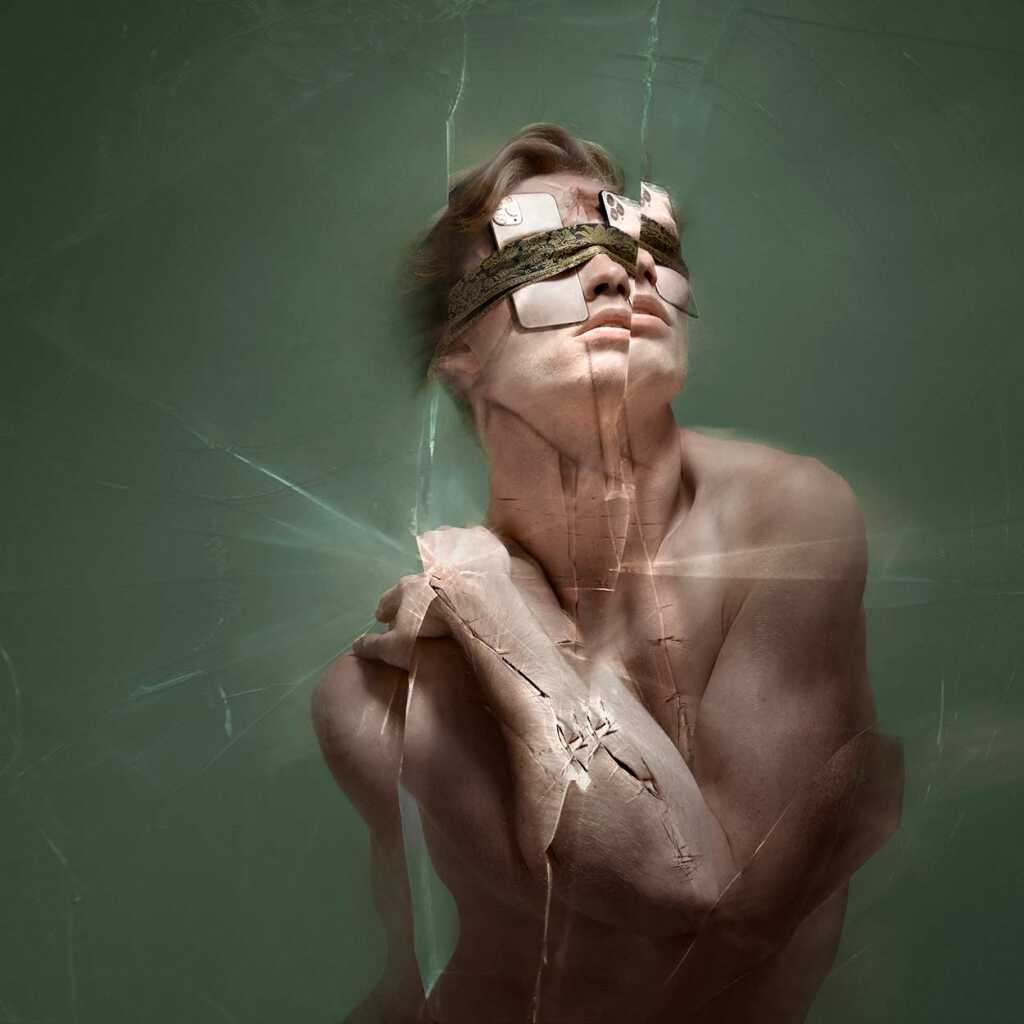
Digital Photography. 2020
Art Market Magazine: From your personal journey in the fine art photography field, what will be your advice to the young photographer looking for a way of development?
Mati Gelman: I would give the same advice as I still give myself to this day: keep going and see yourself as legitimate and rightful to create the work. As Da Vinci noted: “Art is never finished, only abandoned.” There’s no predefined “correct time” to create nor a “right way” to make art; that’s why it’s so difficult. As long as you’re committed to creating, despite any self-doubt, things will eventually fall into place. It’s crucial to see yourself as a rightful creator rather than harboring feelings of being a fraud.
During periods of struggle or when feeling low, simply clock in, metaphorically speaking, and focus on your work. Artistic expression will inevitably unfold, akin to the routine of a regular job – you show up, settle in, and carry out your duties. This seemingly mundane process can surprisingly ignite a spark that gradually escalates into a cascade of inspiration and motivation. It works every time as long as you do not let the resistance win.
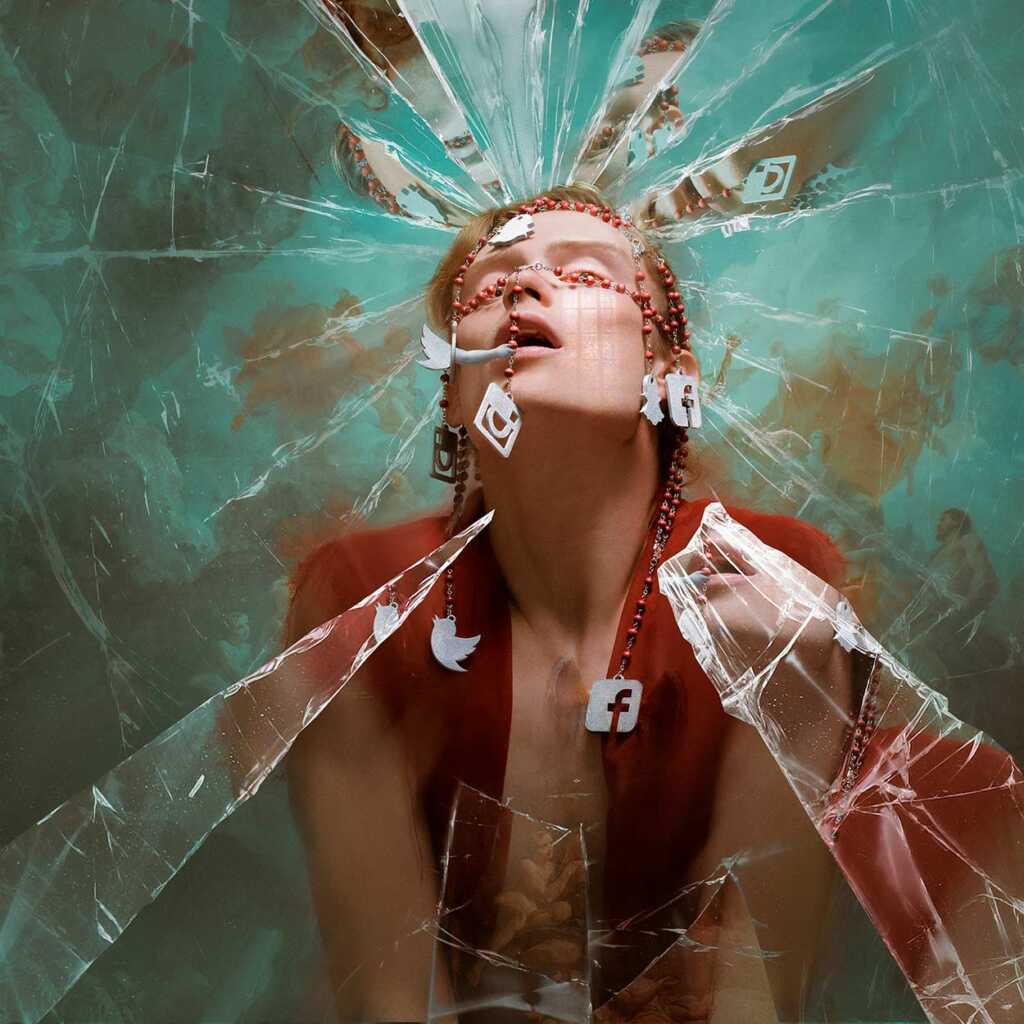
Digital Photography. 2020
Art Market Magazine: Where can our readers find and view your artwork? Are any upcoming exhibitions or participation in art fairs scheduled for the remainder of 2024 or the forthcoming 2025?
Mati Gelman: My work can be found on my website and Instagram. Although I’m currently making many changes to them, everything will remain there. I’m experimenting with new printing methods to officially introduce to collectors—aluminum metallic prints and acrylic prints, in addition to the classic fine art paper giclées, which are a forever favorite. I’m drawn to the classic presentation of photo prints, but there’s something about the seamless, vibrant, and shiny surfaces of acrylic and metal that make them look like you’re viewing the art on an LED screen, just like on my computer. In a way, the viewer can experience the works on a physical print that looks like the ‘original canvas’ they were created on.
My latest great achievements were winning the ‘Lorenzo il Magnifico art award at the ‘XIV Florence Biennale’ and getting representation at the ‘Amsterdam Whitney Gallery in Chelsea, here in New York City. I’m just beyond excited and grateful. My Giclee prints are currently on display at the gallery, and my works are available through them or my website.
This past June, I had a group show with the Arte Borgo Gallery at the Crocetti Museum in Rome. In September, the home gallery will hold a new show with new prints. Finally, I moved into my new studio last June and am working on my business and my personal work. I am so happy to have my own space and fully utilize it for my art.
See the full article in the GOLD LIST Special Edition #8
Website: matigelman.com | Instagram: @matigelman | Facebook: @matigelmanphoto

